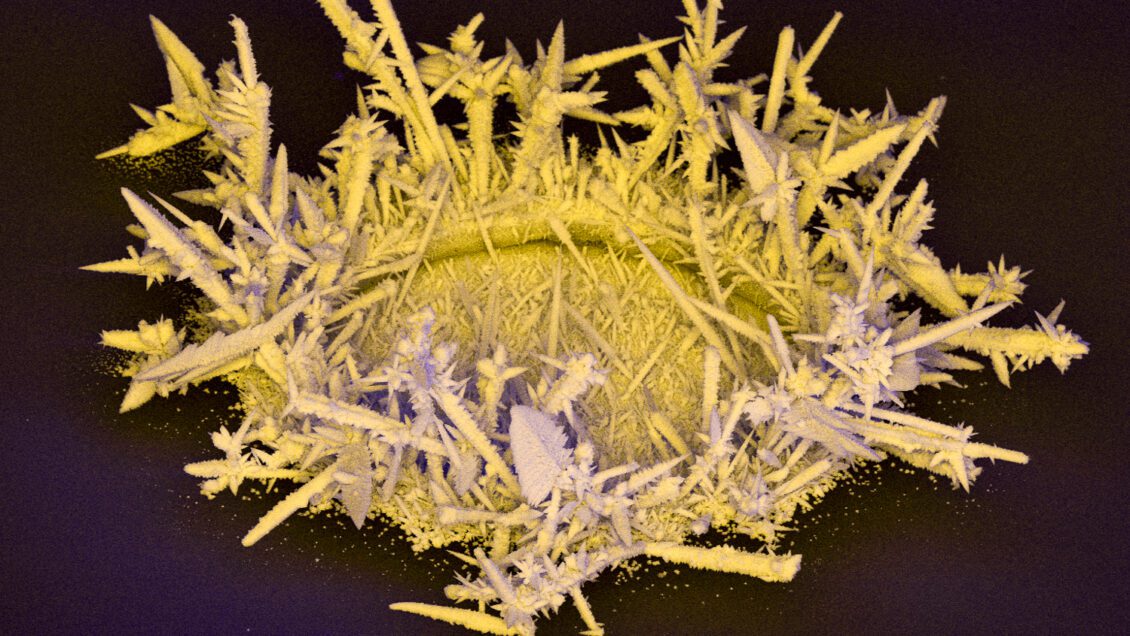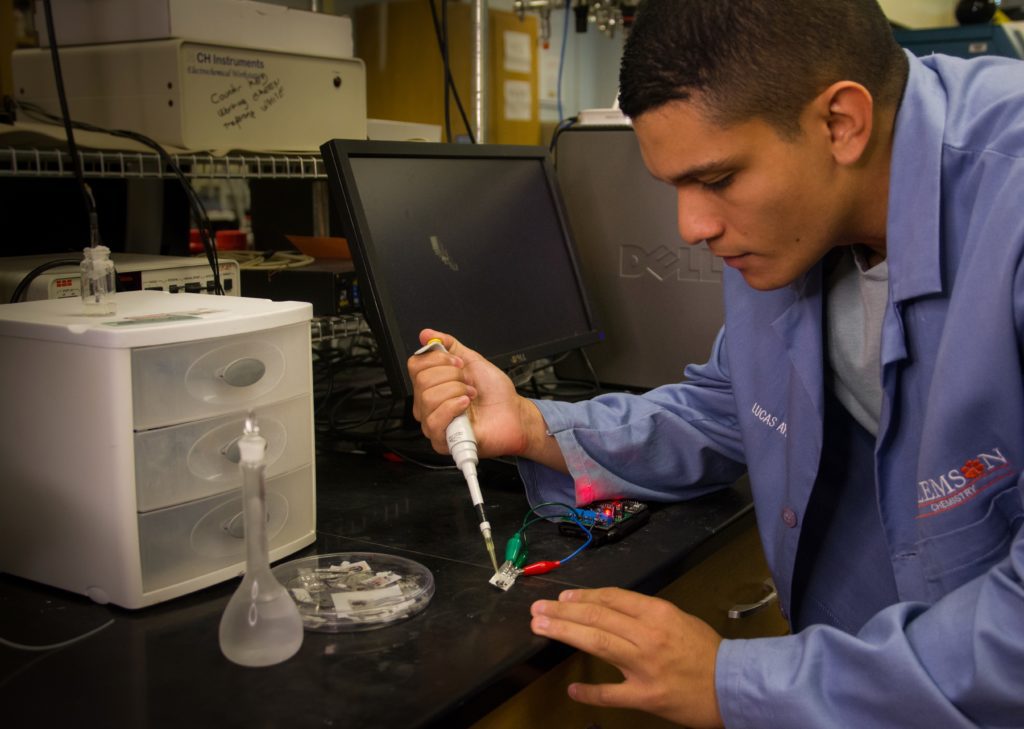
It looks like a crown of thorns.
But instead of something that causes discomfort, the tiny spiky piece of gold could eventually help doctors more quickly diagnose and treat infections and illnesses.

Scientists in Clemson Chemistry Professor Carlos Garcia’s laboratory collaborated with scientists at the Brazilian Nanotechnology National Library to develop spike- and crown-like nanostructured microelectrodes (SC-NMEs) made out of gold that can be electrodeposited on array chips to create reproducible, high-resolution and cost-effective biosensors for health and environmental applications.
Gold is used for making electrodes because of its excellent conductivity and because it is relatively inert, meaning it’s not chemically reactive.
“Our overall goal was to increase the versatility and accuracy of electrochemical biosensors, which stand out as an attractive diagnostic tool by offering low cost, ease of use and portable instrumentation,” said Garcia, whose lab has been focusing on developing sensors and wearable devices as portable diagnostic tools for medical conditions. “We have applied the technology to detect bacteria in a much faster way than we have done before.”
The novel electrodes address two challenges with biosensors — biofouling and throughput, said Lucas Ayres, a recent graduate who worked in Garcia’s lab who is now a postdoctoral researcher at Princeton University. Biofouling is surface contamination when exposed to complex samples such as serum, plasma, urine or saliva.

Simple platform
“The electrodes with spikes provide a simple platform for the detection of small molecules, even in the presence of relatively large amounts of interferences,” Ayres said. “That’s why we can detect things much faster and at a lower concentration.”
As proof of concept, the researchers utilized the sensor to detect Staphylococcus aureus in just 30 seconds (after a 20 minute incubation), which is competitive with the fastest tests in the market.
The World Health Organization has declared antimicrobial resistance one of the top 10 global health threats facing humanity. Garcia said sensitive and fast monitoring methods could play a key role in combating S. aureus-induced infectious diseases.
Faster treatment
Garcia also said the novel electrodes could allow doctors to run multiple samples numerous times in a short period of time, increasing the throughput and allowing for faster treatment.
“This type of electrode is a natural fit for the practical use of sensors, as they can be mass-produced with high reproducibility using standard microfabrication techniques,” Garcia said.
Detailed findings can be found in a paper titled “Ultradense Electrochemical Chips with Arrays of Nanostructured Microelectrodes to Enable Sensitive Diffusion-Limited Bioassays” published in the journal ACS Applied Materials & Interfaces. A photograph of the gold spike-and-crown nanostructured microelectrodes was featured in C&EN’s Chemistry in Pictures collection. C&EN is an American Chemical Society publication that features chemistry and engineering news.
Kristi Whitehead, a principal lecturer in the Clemson Department of Biological Sciences, also participated in this research.
Get in touch and we will connect you with the author or another expert.
Or email us at news@clemson.edu
